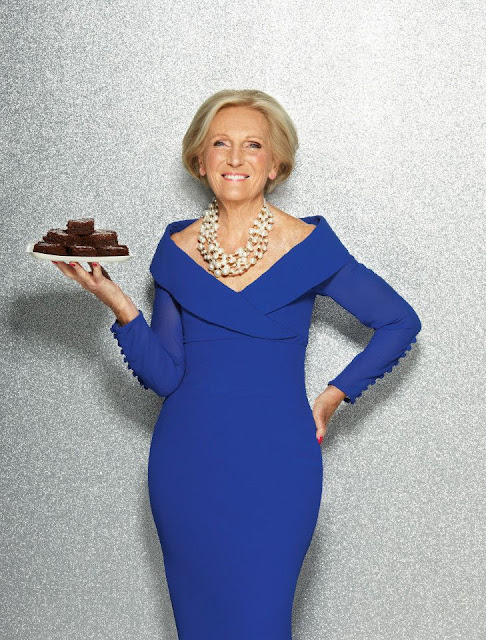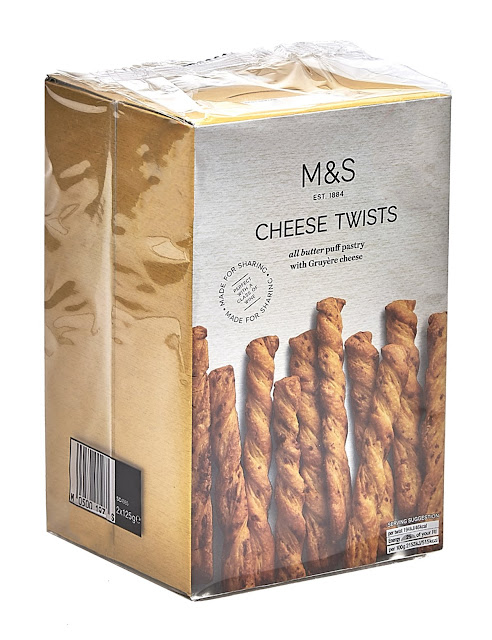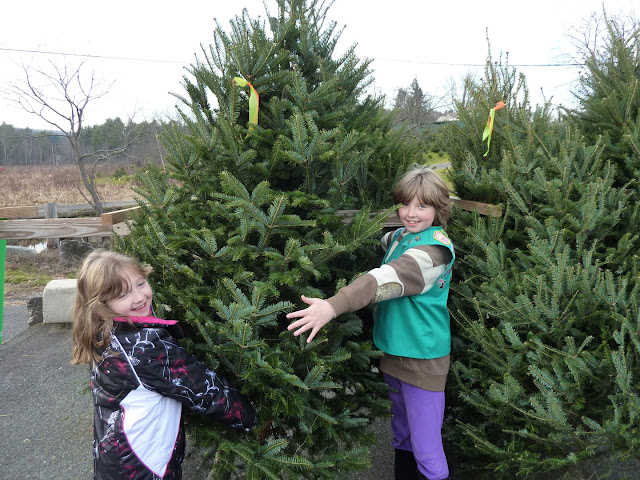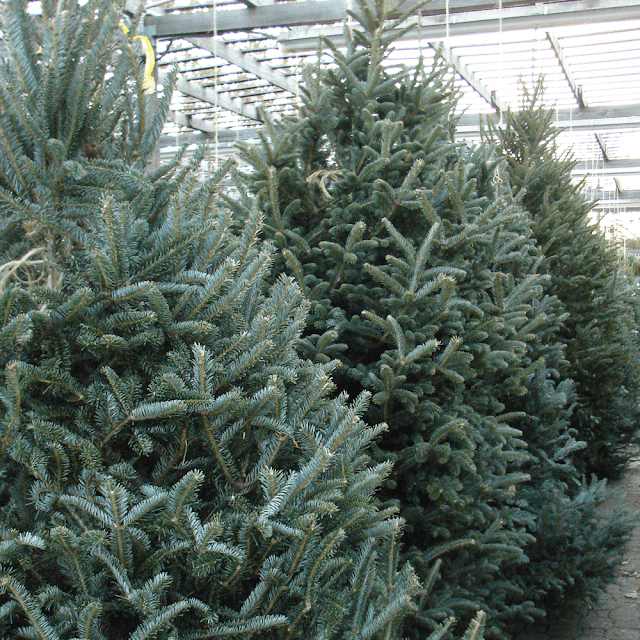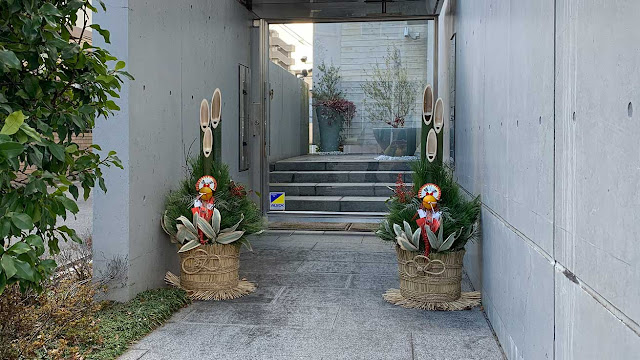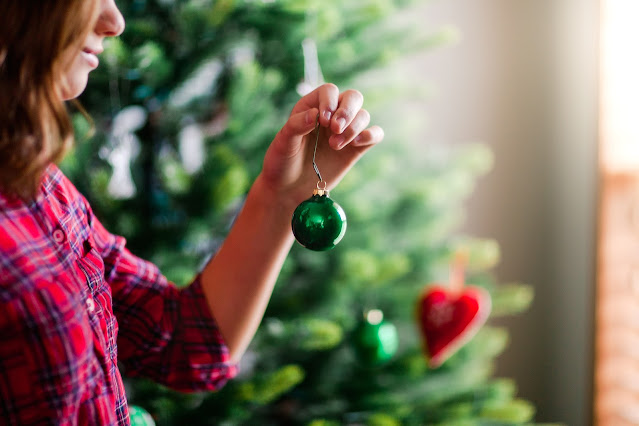From the nation of Wales...
...we tried two bags of Cheddar & Onion flavored (Welsh) potato crisps. They are amazing!
M&S has a line of products that is Made Without Wheat.
We loved their Stem Ginger Snaps! Perfectly spicy and sweet!
We also sampled their "Made Without" Cheese Crackers, but we preferred the tastier Gruyere & Spinach Cheese Twists made by Ardens. As a small-batch start-up in Britain, Ardens uses the finest ingredients from across Europe. We bought four boxes!
24 (imported) items--made with upstanding methods--for $100 is a fairly-priced bargain. We unhappily compared it to the 6-inch Yule Log cake that we preordered from our local NYC bakery, which cost nearly half of that. Despite its high price (almost $50), it looked terribly sloppy, with an uncaring lack of decorating.
It was certainly not appropriate for a holiday that celebrates abundance, festivity, and generosity. Yet, the pricey baker was not ashamed of it. Lewis and I wanted a cake for a party at our friends' home, but we felt embarrassed to offer that one. Therefore, we did not give our money to the baker, and we went elsewhere. The shameful part of the scenario was that the bakery touts itself as one of the best in the neighborhood. If that is the "best", then the densely-packed population of Astoria can anticipate a lot of displeasure.
After that disappointment, we went to one of the "best bakeries in the county" (not just Astoria) and tried to get a yule log cake to serve on Christmas Eve with Lewis' family.
Making it worse, the whole experience of trying to buy it from that baker was unpleasant. He operates two bakeshops in our neighborhood, and he makes yule log cakes during the week(s) preceding Christmas. Twice, we tried calling to see if they were making them yet, but nobody answered the phone. We went to one bakery and didn't see any yule log cakes, so we asked the counter-girl...
Lewis: "Are you selling yule log cakes?"
Employee: "What?"
Lewis: "Are you selling yule log cakes?"
Employee (with uncertainty): "No."
Lewis: "Do you know they are?"
Employee (with hesitation): "No. That's why I said we're not selling them."
Lewis (with disapproval and frustration): "Why would you do something like that? Never mind--can you ask someone in the kitchen."
The employee was gone for five full minutes; she never returned. It was enough time for the other employee to make a cappuccino for another customer, and serve cupcakes to the customer after that. Finally, that employee encouraged us to go to their other bakeshop.
So, we walked five blocks to the second bakery. A counter-girl was aware of what we wanted, but she explained that the baker hadn't made them yet. She told us to return during the next week. I asked which flavors were being offered, and she told us. Lewis asked if he could reserve a vanilla-flavored one. The employee wrote down his order, and invited him to pay in advance... which he did. The pretax cost was $45.00 for a cake that was seven-inches long. The employee asked what day/time Lewis wanted to retrieve his cake, and he chose Thursday at noon.
On that day, Lewis' errands delayed him, so he arrived at the bakery at 4 o'clock. He was dismayed when the baker told him that the cake was not ready. Lewis complained that they already had four extra hours to finish his order. The baker blamed his employee for not writing the pickup time legibly. Lewis proved that the handwriting was clear. Then, he asked when the cake would be ready? He was told to wait 20 minutes. (No, the baker did not offer a complimentary cookie--or even a free coffee while Lewis waited). Seeing Lewis' angst, the baker offered to have the cake delivered to our home.
It's a good thing that Lewis didn't wait for the cake, because it wasn't ready in 20 minutes. It took nearly two hours. Then a messenger brought it to our apartment building and left it with our doormen. The cake looked pretty... but the ingredients were not what Lewis ordered! Instead of vanilla, the cake was chocolate. The frosting was also wrong: it was cream cheese, instead of vanilla. Thankfully, we like cream cheese frosting.
Alas, even during Christmastime, that is a typical NYC experience. Purveyors charge 3-times the price, give bad service, provide inferior products, and then ignore your complaints while they lure the next customer.
Honestly, some of them have an attitude equivalent to merely telling customers to give them money and leave with nothing.
$45 for an underwhelming/frustrating item made in NYC, USA, or $100 for a bountiful amount of treats from overseas?
Which would you pick?
Every time this crappy city gives us grief, Lewis and I look forward to our next "chapter" in life...



